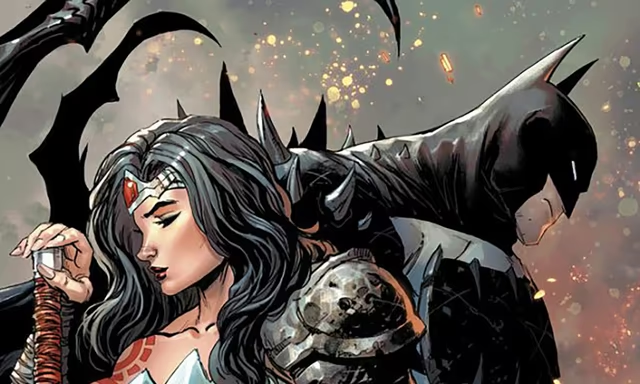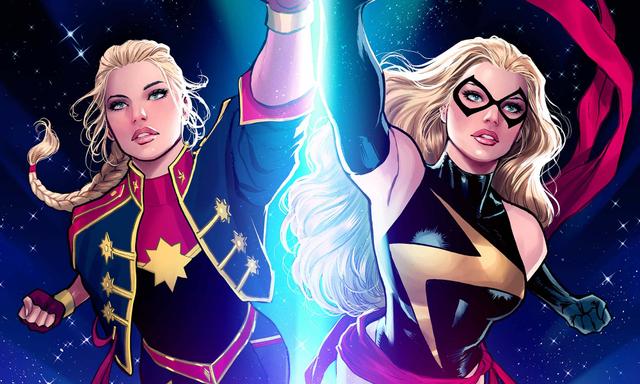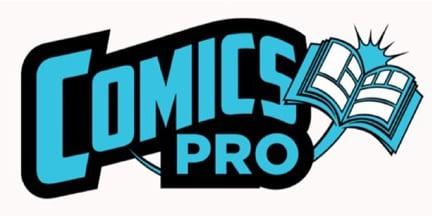If you click on a link and make a purchase we may receive a small commission. Read our editorial policy.
How animating something as simple as tying your shoes exposes the hidden differences between hand-drawn and CGI animation
3D animation requires you to frontload a lot of the design work and doesn't give you much room to improvise, but it has some solid advantages too.

Popverse's top stories
- Tom King describes his “all-encompassing” relationship with DC Comics and DC Studios as one of "love" and "potential"
- Even J.R.R. Tolkien left gaps: Mistborn creator Brandon Sanderson explains why total worldbuilding is a trap for new writers
- DC is using its Absolute line to quietly set the stage for Vertigo Comics’ return in 2026
We’re seeing more and more 3D animation, both in anime and in the West. The technology has been improving consistently since the humble days of ReBoot in the mid-90s, but it still has its limitations. We spoke to Christophe Ferreira, director of the Leviathan anime on Netflix, about working with 3D animation and how it is both better and worse than the more traditional 2D animation we’re used to.
“There’s actually a lot to say about the differences,” Ferreira told us when we interviewed him ahead of Leviathan’s release on Netflix in July. “The two techniques are fundamentally different. You’re not paying attention to the same things, and the limitations or freedoms you have vary drastically between 2D and CG. For instance, in 2D animation, if you want a character to put on a jacket or tie their shoes, it’s just a matter of drawing it – time-consuming, yes, but still feasible. In CG, a scene like that could be disproportionately expensive. Every added layer of interaction with clothing, or even new movements, might require specific rigging or simulation work, which adds up quickly. So you learn to avoid or rethink those kinds of scenes at the E-konte [storyboard] stage when possible.”
Ferreira explained that there was a scene in Leviathan where a character was meant to be getting out of bed. The problem was that they hadn’t created a model of the character without shoes on, so they had to draw the socks in each frame in the scene.
“On the other hand, one great advantage of CG – especially in a TV series context – is the ability to create long shots with characters moving in perspective or just walking around,” Ferreira countered. “That kind of shot would be a nightmare to handle in a 2D TV production. In CG, it’s much more achievable and can add a cinematic quality to the show.”
A lot of work in 3D animation is also frontloaded into the design process, as characters are designed and rendered earlier. “In 2D, if you need a new character, you can just draw it – sometimes even at the layout stage,” Christophe Ferriera told us. “But in CG, each new character has to be modeled, rigged, textured… so it’s a big investment. That means the number of characters in a show has to be carefully considered at the script stage, and you can’t improvise as easily. On the flip side, one of CG’s strongest advantages is consistency. Once a 3D character model is built, and Orange does their magic, it looks the same across the entire show. There’s no need to constantly correct drawings to maintain model consistency, which is often a big challenge in 2D. That frees up the team to focus on other creative elements, like composition, lighting, and layout.”
Each week, Popverse's resident anime expert Trent Cannon runs down the latest and, dare we say "greatest," in anime and manga in Popverse Jump. Some recent columns have included...
- Aggretsuko vs Chainsaw Man: Two Wildly different anine with the same anti-capitalist message
- The Summer Anime season return of Kaiju No. 8, Sakamoto Days, & Dan Da Dan are forcing me to break my vow of watching less anime
- From Tomo-Chan to Oshi No Ko: How some of your favorite manga creators got their start in hentai
- Piracy is baked into anime's past, but, like Crunchyroll, we should move on from it
- Flying whales, mechs, and Miyazaki vibes: Inside Netflix's Leviathan anime with the people who made it
- How AI translations of manga continues the 'enshitification' of the medium, and why Japanese publishers are "less precious" about it
- I never wanted a Cyberpunk Edgerunners sequel, but God help me I'm going to watch it
- The Summer Hikaru Died delivers its cosmic horror at an agonizingly slow pace
- The one thing that Dan Da Dan does better than Demon Slayer ever did
- Studio Ghibli movies have never been as cozy as you think they are and that's what makes them magic
Follow Popverse for upcoming event coverage and news
Find out how we conduct our review by reading our review policy
Let Popverse be your tour guide through the wilderness of pop culture
Sign in and let us help you find your new favorite thing.














Comments
Want to join the discussion? Please activate your account first.
Visit Reedpop ID if you need to resend the confirmation email.